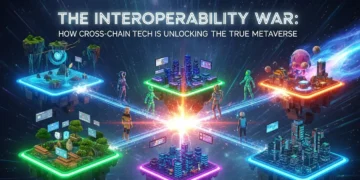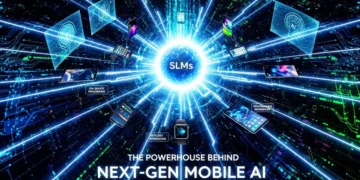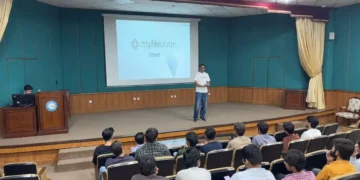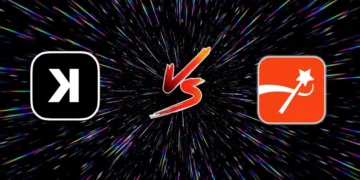If you’re wondering whether Bitcoin mining will still be worth it in 2025, you’re not alone. With the rise of new technologies and shifting market dynamics, more people are exploring how to mine cryptocurrency from home or through platforms like Binance Cloud Mining.
However, the truth is that the landscape has changed. The days of easily yielding high returns from casual CPU crypto mining are gone — unless you know exactly what you’re doing. This guide will walk you through everything you need to know about mining cryptocurrency on a PC, the most profitable coins to mine, and whether investing in a mining rig is right for you.
With Bitcoin’s price surpassing $100,000 in early 2025 and institutional adoption growing, many are wondering: Is Bitcoin mining still profitable? The answer depends on several factors: your hardware, electricity costs, and mining strategy.
Whether you’re a beginner looking for the best cryptocurrency to mine in 2025 or an experienced miner looking to optimize your mining rig, this guide has you covered. We’ll explore:
The most profitable coin to mine in 2025
How to mine cryptocurrency on PC (CPU vs. GPU vs. ASIC)
Cloud mining Bitcoin vs. setting up your rig
The best Bitcoin miner hardware available today
Key FAQs, including GPU mining profitability and long-term Bitcoin price predictions
Let’s dive in!
What is Bitcoin mining?
At its core, it is the process by which new bitcoins are created and transactions are verified on the blockchain. Miners use powerful computers to solve complex cryptographic puzzles, and they are rewarded with newly minted BTC in return.
By 2025, the landscape will have evolved significantly. Mining requires more specialized hardware, higher energy efficiency, and a deeper understanding of network dynamics than ever before.
So, what exactly happens when you mine Bitcoin? Let’s break it down.
Key Mining Concepts in Simple Words
Before we dive into the technicalities, here are some basic concepts:
- Mempool: A temporary holding area for unconfirmed transactions.
- Block Header: A unique identifier that contains metadata about a block.
- Nonce: A random number used once in cryptographic communication.
- Hash Rate: The speed at which a computer can perform hashing operations.
Understanding these terms will help you grasp how Bitcoin mining works and why certain strategies are more effective than others.
🤔 Have you ever wondered how a decentralized system like Bitcoin can ensure transaction accuracy without a central authority?
The Role of Mining in the Bitcoin Ecosystem
Transaction Verification
Every time someone sends or receives Bitcoin, the transaction must be verified. This is where miners come in. They bundle transactions into blocks and validate them through computational work.
Network Security
Miners secure the network against fraudulent activity by solving proof-of-work puzzles. Without miners, Bitcoin would be vulnerable to double-spending attacks.
Decentralization
Mining supports Bitcoin’s decentralized nature. No single entity controls the entire network — instead, power is distributed among miners worldwide.
Currency issuance
Miners essentially act as the “mint” of the Bitcoin economy. Each time a block is mined, new BTC enters circulation as a reward.
Consensus Building
Through mining, nodes across the globe agree on the validity of transactions. This consensus mechanism is fundamental to Bitcoin’s trustless architecture.
Proof-of-Work and Why It matters
Proof-of-work (PoW) is the consensus algorithm used by Bitcoin. It requires miners to expend computational resources to create valid blocks. This makes altering past transactions computationally impractical and economically unviable.
PoW also prevents spamming the network with fake transactions. The high cost of entry (due to necessary hardware and electricity) discourages malicious behavior.
How does Bitcoin Mining work?
The Mechanics of Mining
Transaction Verification: Miners check pending transactions in the mempool.
Building a Block: Transactions are bundled into a candidate block.
Solving the Puzzle: Miners compete to find a nonce that produces a valid hash.
Block Reward: The winner receives 6.25 BTC (post-2024 halving).
Bitcoin Halving Explained
Every 210,000 blocks (approximately every four years), the block reward is cut in half. In 2024, it dropped from 12.5 to 6.25 BTC. The next halving is expected in 2028.
Why Bitcoin Mining still matters in 2025
Bitcoin remains the most recognized and valuable cryptocurrency. Many experts predict it will continue to grow in value over the next
few years. Despite the increasing difficulty levels and energy costs, Bitcoin mining continues to attract individual miners and large-scale operations alike.
Is Bitcoin mining profitable?
The short answer? It depends.
- Mining rigs: High-performance rigs using application-specific integrated circuits (ASICs) dominate today’s market.
- Cloud mining Bitcoin offers a low barrier to entry, but requires caution due to scams.
- Bitcoin Mining Calculator: This is an essential tool for estimating your ROI based on electricity costs, hash rate, and the current Bitcoin price.
With the Bitcoin halving event occurring in April 2024, the reward per block dropped to 3.125 BTC. This makes efficiency more important than ever.
So, if you’re thinking about getting started, ask yourself: What tools do I have access to? More importantly, who will you mine with?
Best Crypto to Mine in 2025: Profitability Breakdown
With Bitcoin mining difficulty at an all-time high, many miners are turning to alternative cryptocurrencies. Here’s a quick comparison of the best crypto to mine in 2025:
| Cryptocurrency | Mining Algorithm | Hardware Recommendation | Profitability Outlook |
|---|---|---|---|
| Bitcoin (BTC) | SHA-256 | ASIC (e.g., Bitmain Antminer S21e XP Hyd) | High competition, best for large-scale miners |
| Monero (XMR) | RandomX | CPU mining (ASIC-resistant) | Great for home miners |
| Litecoin (LTC) | Scrypt | ASIC (e.g., VolcMiner D1 Hydro) | Stable rewards |
| Ravencoin (RVN) | KAWPOW | GPU mining (NVIDIA RTX 4090) | ASIC-resistant, good for small miners |
| Dogecoin (DOGE) | Scrypt | ASIC or GPU mining pools | Best for combined LTC/DOGE mining |
Key Takeaway: If you’re mining at home, Monero and Ravencoin are excellent choices because of their ASIC-resistant algorithms. For industrial-scale mining, Bitcoin and Litecoin are still the best options.
How to Mine Cryptocurrency in 2025: Step-by-Step Guide
1. Choosing Your Mining Method
There are several ways to mine crypto:
CPU Mining: Best for Monero (XMR) and other ASIC-resistant coins.
GPU Mining: Still viable for Ravencoin (RVN) and Ethereum Classic (ETC).
ASIC Mining: The best Bitcoin miner machines dominate SHA-256 mining.
Cloud Mining: Services like Binance Cloud Mining let you rent hash power.
Question: Which method fits your budget and goals?
2. Setting Up Your Mining Rig
If you’re building a mining rig, here’s what you’ll need:
Hardware: ASIC (for Bitcoin) or high-end GPUs (for altcoins).
Mining Software: Popular options include CGMiner and NiceHash.
Wallet: A secure crypto wallet to store earnings.
Cooling System: Mining generates heat—proper ventilation is crucial.
Pro Tip: Use a Bitcoin mining calculator to estimate profitability before investing.
3. Joining a Mining Pool
Solo mining Bitcoin is nearly impossible today. Instead, join a mining pool like F2Pool or Antpool to earn consistent payouts.
Is GPU Mining Still Profitable in 2025?
Many miners ask: Is GPU mining dead? The answer depends on the coin:
Yes, for ASIC-resistant coins like Ravencoin and Monero.
No, for Bitcoin, ASICs dominate the network.
Key Consideration: Electricity costs make or break profitability. If your power rate is above $0.12/kWh, GPU mining may not be worth it.
Cloud Mining Bitcoin: Is It Worth It?
Cloud mining Bitcoin allows you to rent hash power without managing hardware. Pros and cons:
✅ Pros:
No upfront hardware costs.
No noise or heat issues.
❌ Cons:
Lower profits due to fees.
Risk of scams (always verify providers like Binance Cloud Mining).
Verdict: Only use reputable cloud mining services and compare ROI carefully.
Bitcoin Price Prediction: Where Is BTC Headed?
Many wonder: What is the prediction for Bitcoin in 2025? Analysts suggest:
Short-term (2025): $100K–$150K range.
Long-term (2030): Some predict $500K+, while skeptics warn of volatility.
Key Factors Affecting Price:
Institutional adoption (ETFs, corporate holdings).
Bitcoin halving effects (next one in 2028).
Regulatory developments.
Mining at Home: Is It Still Viable?
Many beginners wonder: How to mine Bitcoin at home in 2025? The answer is yes — but with caveats.
You’ll need:
- A mining rig or access to cloud mining Bitcoin services.
- Cooling systems to manage heat output.
- Stable internet connection and uninterrupted power supply.
For those who don’t want the hassle of managing hardware, Binance Cloud Mining and other platforms offer flexible contracts that let you mine remotely.
⚠️ Warning: Always research providers thoroughly. Many fake cloud mining services exist.
Tools and Apps to Enhance Your Mining Experience
Technology plays a key role in optimizing your Bitcoin mining strategy in 2025. Here are some must-have tools:
Bitcoin Mining Calculator
This helps estimate your earnings after factoring in:
- Hash rate
- Power consumption
- Electricity cost
- Current BTC price
Use calculators from reputable sites like WhatToMine or CryptoCompare
Crypto Mining App
Apps like:
- NiceHash: Auto-switches between the most profitable coins.
- HiveOS: Remote management for mining farms.
- MinerGate Mobile Miner: Great for beginners experimenting with mobile mining.
These apps simplify the process and improve efficiency, especially for users managing multiple rigs or pools.
Navigating the Risks of Bitcoin Mining
Like any investment, Bitcoin mining in 2025 comes with risks. These include:
- Rising electricity costs
- Regulatory changes
- Market volatility
- Equipment depreciation
Before jumping in, ask yourself: How long will we be able to mine Bitcoin? The final Bitcoin is expected to be mined around 2140, so there’s plenty of time left, but competition will only increase
Is Bitcoin Mining Profitable in 2025?
Factors to consider:
Electricity Costs: Ideal rate: <$0.05/kWh.
Hardware Costs: ASICs start at ~$2,000.
Bitcoin Price: Volatility impacts ROI.
Example: A miner with an Antminer S21 (200 TH/s) and $0.04/kWh earns ~$12/day post-halving.
Future Trends in Bitcoin Mining
Green Mining: Renewable energy adoption (solar/hydro).
Regulation: Tighter energy-use laws in some countries.
Layer-2 Solutions: Lightning Network reduces transaction load.
How is Bitcoin Mined? A Step-by-Step Guide
Understanding the Mempool
All unconfirmed transactions sit in the mempool until miners pick them up. Transactions with higher fees are usually prioritized.
Constructing a Candidate Block
Miners gather transactions from the mempool and begin constructing a candidate block. This includes selecting which transactions to include and calculating their hash.
Building the Block Header
The block header contains critical data such as the previous block’s hash, a timestamp, and the nonce.
Comparing Against the Difficulty
Each block must meet a specific difficulty target. Miners adjust the nonce repeatedly until the resulting hash meets this requirement.
Adjusting the Nonce
This step involves trial and error. Miners increment the nonce value and rehash until they find a valid solution.
Broadcasting the Block
Once a valid block is found, it’s broadcast to the network for validation by other nodes.
Adjusting the Mining Difficulty
Every 2016 blocks (~2 weeks), the network adjusts the mining difficulty based on the total hash rate. This keeps block times around 10 minutes.
History of Bitcoin Mining
CPU Mining
Back in 2009, anyone could mine Bitcoin using a standard computer processor. In fact, Satoshi Nakamoto himself mined the first block using his CPU.
GPU Mining
As competition increased, miners turned to graphics processing units (GPUs), which offered superior hashing capabilities.
FPGA Mining
Next came field-programmable gate arrays (FPGAs), customizable chips that outperformed GPUs in both speed and efficiency.
ASIC Mining
Today, ASIC mining dominates the industry. These application-specific integrated circuits are designed solely for mining and offer unmatched performance.
🔍 Want to know the best ASIC miners in 2025? We’ll cover that later.
Security & the 51% Attack
A 51% attack occurs when a single entity controls more than half of the network’s mining power. This would allow them to manipulate transactions, including double-spending coins.
While theoretically possible, executing such an attack on Bitcoin is prohibitively expensive due to its massive hash rate. Still, smaller cryptocurrencies have fallen victim to similar attacks.
⚠️ Is your mining pool too large? Consider diversifying to avoid centralization risks.
Tax Considerations of Bitcoin Mining
Depending on your jurisdiction, Bitcoin mining tax implications can vary. In many countries, mined coins are considered taxable income at the time of receipt.
You may also owe capital gains tax if you sell your BTC at a profit. Always consult a tax professional familiar with cryptocurrency regulations.
Mining’s Environmental Impact
Critics often point to Bitcoin mining’s environmental impact, citing high energy consumption. However, the narrative is changing:
- Many miners now use renewable energy sources.
- Some repurpose stranded natural gas to power mining rigs.
- Energy-efficient ASICs reduce overall consumption per hash.
Still, sustainability remains a hot topic in the crypto community.
🌱 Are you using green energy for your mining operation? If not, should you?
How to Mine Bitcoin: A Beginner’s Guide
Step 1: Get the Right Mining Hardware
Invest in top-tier ASIC miners like the Bitmain Antminer S19 Pro or MicroBT WhatsMiner M50S. These devices offer optimal performance per watt.
Step 2: Choose Trusted Mining Software
Use reliable software like CGMiner, BFGMiner, or Awesome Miner to manage your hardware.
Step 3: Join a Mining Pool or Start Solo Mining
Solo mining is risky unless you have substantial resources. Most beginners opt for pool mining, where rewards are shared among participants.
Step 4: Set Up a Bitcoin Wallet
Choose a secure wallet to receive your mining rewards. Options include hardware wallets like Ledger or software wallets like Electrum.
Step 5: Start BTC Mining and Monitor
Once everything is set up, start mining and monitor your rig’s performance regularly.
Methods of Bitcoin Mining in 2025
CPU Mining
Now obsolete for Bitcoin due to inefficiency.
GPU Mining
Still viable for altcoins but not competitive for BTC anymore.
ASIC Mining
The standard for Bitcoin mining in 2025. High upfront cost, but essential for profitability.
Cloud Mining
Rent hashing power remotely. Be cautious of scams and ensure transparency from providers.
Pool Mining
Join forces with others to increase the chances of earning rewards. Ideal for individual miners.
Solo Mining vs. Pool Mining vs. Cloud Mining
🧭 Which method aligns best with your goals?
The Costs and Profitability of Bitcoin Mining
Energy Consumption and Electricity Costs
Electricity is your biggest expense. Look for regions with low kWh rates, ideally under $0.05/kWh.
Hardware Investment and Maintenance
High-end ASICs can cost thousands. Factor in cooling, maintenance, and potential downtime.
💰 Is Bitcoin mining worth it in your area? Calculate your ROI before investing.
Challenges and Risks of Bitcoin Mining
- Regulatory Uncertainty: Laws change rapidly. Stay informed.
- Hardware Obsolescence: New ASIC models render older ones less competitive.
- Market Volatility: BTC price swings affect profitability.
- Scams: Avoid cloud mining schemes promising unrealistic returns.
FAQs
1. How to mine Bitcoin at home in 2025?
You’ll need an ASIC miner (like the Bitmain Antminer S21 XP+ Hyd) and cheap electricity.
2. How long will we be able to mine Bitcoin?
Bitcoin’s last block will be mined around 2140, but profitability will decline as rewards decrease.
3. Which coin will reach $1 in 2025?
Coins like Ravencoin (RVN) or Shiba Inu (SHIB) could hit $1 if market conditions align.
4. Can Bitcoin go to zero?
Unlikely—Bitcoin has survived multiple crashes and remains the most resilient crypto.
5. Is GPU mining still profitable in 2025?
For certain altcoins (Ravencoin, Monero), yes—but not for Bitcoin.
6. What’s the most profitable coin to mine?
Currently, Bitcoin (with ASICs) and Monero (with CPUs) lead in profitability.
Final Thoughts
Bitcoin mining in 2025 is still profitable—if you have the right setup. Key takeaways:
ASIC miners dominate Bitcoin mining—expect high upfront costs.
GPU/CPU mining works for altcoins like Monero and Ravencoin.
Cloud mining is an option, but requires caution.
Always use a Bitcoin mining calculator before investing.
Ready to start? Choose your mining method wisely and stay updated on market trends!
Conclusion
In 2025, Bitcoin mining isn’t just about luck; it’s about strategy, knowledge, and the right tools. Whether you’re using a mining rig, trying CPU crypto mining, or exploring which cryptocurrency to mine, the key is to stay informed and adaptable.
If you found this guide helpful, consider sharing it with fellow miners or subscribing to our newsletter for updates on mining cryptocurrency and blockchain technology trends.
Have questions or experiences to share? Drop them in the comments — we’d love to hear from you!






































